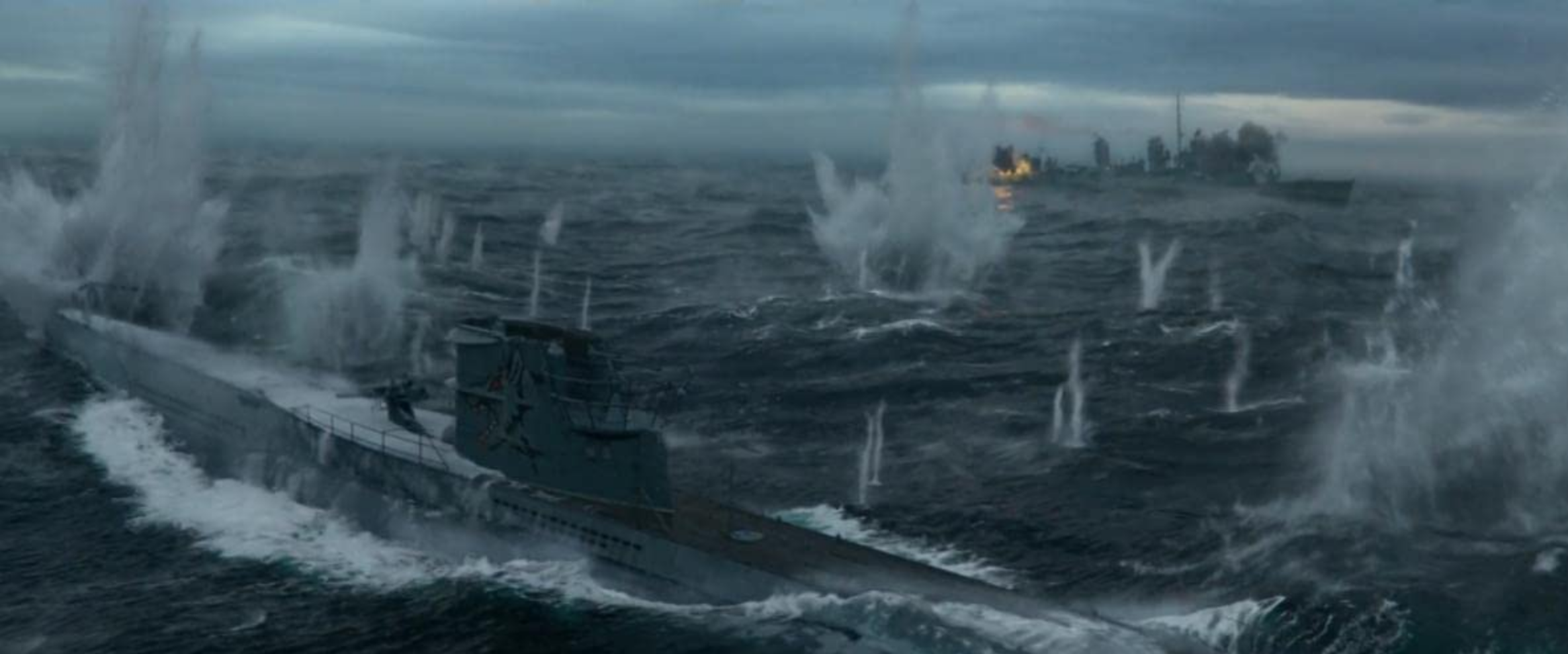GREYHOUND
Directing: B
Acting: B
Writing: B
Cinematography: B+
Editing: B+
Special Effects: B+
Greyhound brings to mind the 2006 Paul Greengrass film United 93: packed with real-time procedure, a little short on story development. In the case of both films, it really just means it works for a particular type of viewer. It’s just not for everyone.
Would I have gone to see Greyhound were it playing in theaters? Probably; although it’s moderately lacking in many regards, it has a degree of visual detail that would best be seen on a big screen. Or, I suppose, I should just get myself a truly large-screen TV screen one of these days. This film is now available streaming on Apple TV+, where I watched it on my 32” screen.
Probably 95% of 91-minute run time takes place on the open ocean of the Atlantic, the Greyhound of the title being the ship captained by Krause (Tom Hanks), leading an Allied convoy on his first-ever crossing, in early 1942. All of them are being stocked by a German submarine wolf pack, one of them occasionally getting onto their intercom to taunt them, and all of the strategic moves among the convoy are made at Krause’s direction. Some have tragic consequences; some are near misses; some are skilled successes.
And there’s a lot of said direction. The script is written by Tom Hanks himself (his third, after That Thing You Do and Larry Crowne, so this marks a bit of a departure) and based on the 1955 novel The Good Shepherd by C.S. Forester. Clearly Hanks has a longstanding interest in World War II, and he must be going for authenticity when he packs what must be more than half the dialog with straight-up repetition: Krause gives an order; the person taking them repeats it back. That person passes along said order; another person repeats it back. I’ve never seen a movie with so many of its lines repeated verbatim in quick succession.
The only back story we get on Krause is the woman he left back home (Elisabeth Shue), whom he asked to come away with her the previous december. There’s a brief scene of this single encounter near the beginning of the film, with quick flashbacks sprinkled through the rest of the movie. We know nothing more about Krause, apart from when we learn of his inexperience; we know even less about the woman. The focus of this film is otherwise entirely on the sea battles and chases between Allied navy ships and German submarines.
To director Aaron Schneider’s credit, these battles are very well staged, and often very well shot. One memorable visual entais a camera sweep from the sea up through the clouds, flashes from bombs still visible beneath them, and the aurora borealis above them. Still, this is also similar to Christopher Nolan’s Dunkirk (2017), in that it’s visually impressive but gives us virtually nothing in terms of its characters. At least Dunkirk was a technical marvel; to be honest, occasionally Greyhound shows its seams. Some of its CGI augmentation is fairly obvious.
That doesn’t lessen its degree of engagement, though. Greyhound is fundamentally an action movie; it’s just old-school serious in tone, no witty quips by action heroes. Decisions have consequences, often fatal on a grand scale. Oddly, Hanks’s script doesn’t give himself much to chew on as an actor, as all the suspense and drama here is procedural, only emotional in very subtle ways. He won’t be getting an Oscar nomination for this one. And that’s okay; he has enough of them.
Still, Greyhound is a suitable movie for fans of either Tom Hanks or World War II films, or particularly, both. Even for the casual viewer (that’s me!), it commands attention.
Look out!
Overall: B

